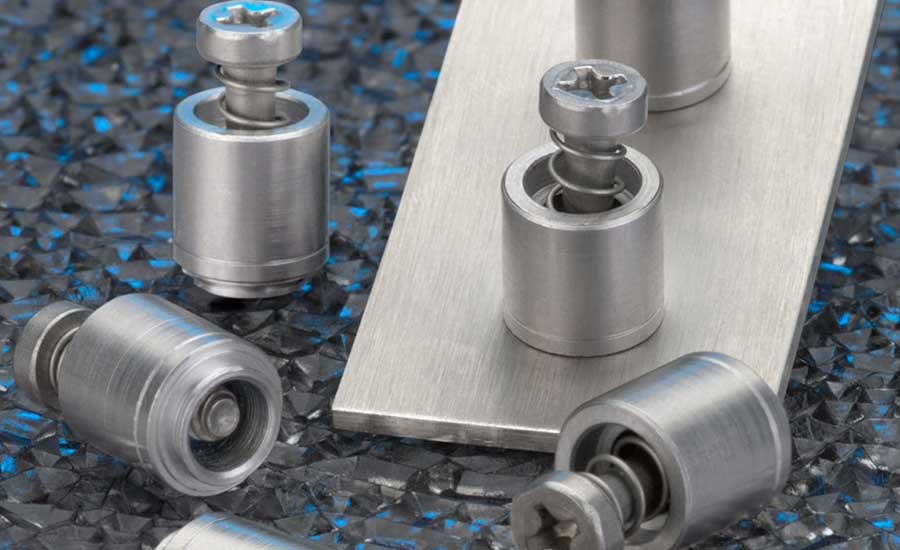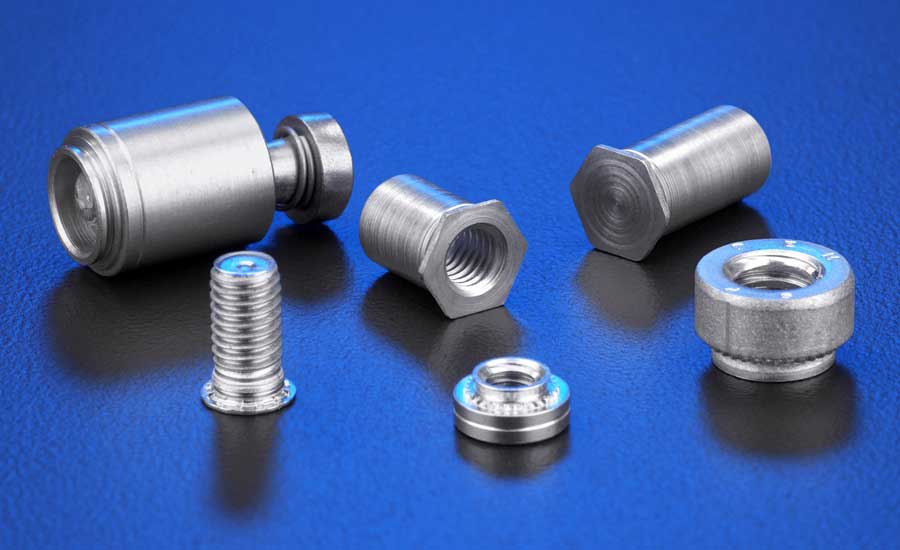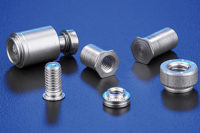Self-clinching fasteners—providing reusable load-bearing threads to accept mating hardware—offer ideal solutions for attachment applications in appliances where metal sheets may be too thin to be tapped or where extruded or stamped threads would be impractical. Upon their permanent installation (usually during the fabrication process), self-clinching fasteners become integral parts of an assembly, will not loosen or fall out (even when the mating thread is removed), never have to be restrained from rotation with a tool, and never have to be handled again.
The fasteners additionally allow for repeated component removal and re-attachment as necessary (unlike welds or adhesives) and can significantly reduce loose hardware count by eliminating washers, lock washers, and/or nuts. Fewer parts enable lighter designs, quicker assembly, lower production costs, and optimized levels of appliance reliability.
Even with these advantages inherent in self-clinching fastener technology, however, challenges may arise—for a variety of reasons—when specifying and then installing a stainless-steel fastener for use in a stainless-steel sheet. Before the benefits can be fully realized for stainless-into-stainless applications, adhering to fundamental guidelines will be essential in promoting optimized fastener installation and performance in service.
The following critical considerations can help point the way toward application success when pairing stainless self-clinching fasteners with stainless assemblies.
Ensure that the fastener is harder than the sheet in which it is installed. A prevalent misconception is that all stainless self-clinching fasteners will perform as intended in all stainless-steel sheets, regardless of the relative hardness of fastener and host sheet. This is not the case, based on how and why self-clinching fasteners install.
All self-clinching fasteners install permanently by pressing them into place in a properly sized hole and then applying sufficient squeezing force. The fastener’s serrated clinching ring, knurl, ribs, or hex head is consequently into the panel surface, displacing sheet material into a specially designed annular recess in the shank or pilot of the fastener, known as an undercut. The metal displaced into the undercut secures the fastener against axial movement, while a non-round displacer secures the fastener against rotation to result in the fastener’s permanent installation.
Due to the requirements of this process, the fastener must always be sufficiently harder (typically 20 points on the HRB or HB hardness scales) than the host material to ensure proper and permanent installation. Sheets, too, must be in the annealed condition to allow the displaced sheet material to cold flow into the fastener’s undercut without fracturing.
The conclusion is that stainless steel self-clinching fasteners made from 300 Series cannot be expected to perform reliably in 300 Series stainless steel sheets (the fastener must always be harder). Ultimately, stainless steel self-clinching fasteners made from special-alloy or precipitation-hardened materials will provide the best overall performance installing into stainless sheets.
It should be noted that while 400 Series stainless steel fasteners can effectively be installed and will exhibit excellent performance in 300 Series stainless sheets, they should not be specified if the end product will be exposed to appreciable corrosive elements, requires non-magnetic fasteners, or will encounter temperatures in service above 300ºF (149º C).
Determine the required level of corrosion resistance for the fastener. Precipitation hardened stainless clinch fasteners will exhibit extremely high corrosion resistance suiting particularly demanding appliance industry applications, such as medical, foodservice, fluid handling, and marine equipment and devices, among others.
Minimize chances for thread-binding issues from galling. Self-clinching fasteners made from stainless steel may potentially encounter thread-binding issues related to galling. Galling is the seizing or abrading of threads caused by adhesion between sliding mating-thread surfaces—resulting in fastener damage and/or failures.
While not necessarily a widespread problem, mating threads can gall for any number of reasons before, during, or after the assembly process. Culprits include some material and finish combinations, fine and/or dirty threads, excessive tightening torque, mating part misalignment, or low-quality fasteners, among other possible causes.
The likelihood of galling can be minimized using preventive and proactive techniques. A preventive approach is to simply eliminate the factors known to contribute to galling. From a proactive perspective, tips include specifying or applying dry-film lubricant or anti-seize compound or choosing a fastener made from anti-galling materials or with anti-galling plating. Whenever lubricant is added or plating is changed, however, the torque-tension relationship will change, too. (Lubricants will reduce the tightening torque required for desired pre-load). In these cases, the tightening torque should be re-evaluated in turn.

Stainless steel self-clinching captive panel screws represent a new generation of “access hardware” engineered for stainless steel attachment applications.
Verify sufficient installation force consistent with fastener thread size. Stainless steel self-clinching fasteners featuring relatively larger thread size will always require higher installation forces for proper fastener installation compared with smaller-thread clinch fasteners. It is imperative that a fastener installation machine for these parts be equipped and verified to develop the necessary squeezing force for the job.
Choose the proper fastener type and style for the application. Significant strides have been made over the years in developing “stainless for stainless” clinch fasteners to meet application requirements, whether for basic component attachment, stacking or spacing, or opening the door for subsequent access to assemblies. Among the notable families in the stainless clinch fastener category:
- Stainless self-clinching nuts provide strong load-bearing internal threads to accept mating screws. Upon nut installation, the reverse side of the sheet will flush and smooth. Styles include types with reduced outer dimensions and thinner sheet capabilities than standard and “floating” versions to compensate for mating hole misalignment, among other examples.
- Stainless self-clinching thru-hole threaded standoffs and blind threaded standoffs enable components to be stacked or spaced in an assembly. (Unthreaded types have been introduced for spacing multi-panel assemblies.) These fasteners are installed with heads flush with one surface of the mounting sheet and, in the case of blind styles, the outer sheet surface is both flush and closed.
- Stainless self-clinching flush-head studs mount flush in stainless sheets and include types demonstrating especially high hardness and corrosion resistance properties.
- Stainless self-clinching captive panel screws represent a new generation of “access hardware” for stainless applications. These complete, spring-loaded assemblies meet UL 1950 “service area access requirements” and their captive-screw design removes handling and installation issues associated with loose screws.
The portfolio of stainless self-clinching fasteners has further been augmented to include studs with externally threaded attachment points, swaging collar studs to accommodate multiple panels, fasteners enabling flush “face-on-face” sheet attachment in stainless steel, internally threaded floating nuts to allow for mating hole misalignment and locking threads, and “micro” pins and studs ideally tailored for compact consumer electronics applications.
As stainless applications for appliances continue to emerge and evolve, the universe of stainless self-clinching fastener solutions can be expected to expand in response. Partnering with an experienced manufacturer equipped with expertise and engineering support ultimately can deliver a big assist in successful outcomes both for today’s and tomorrow’s applications, regardless of the challenge.



